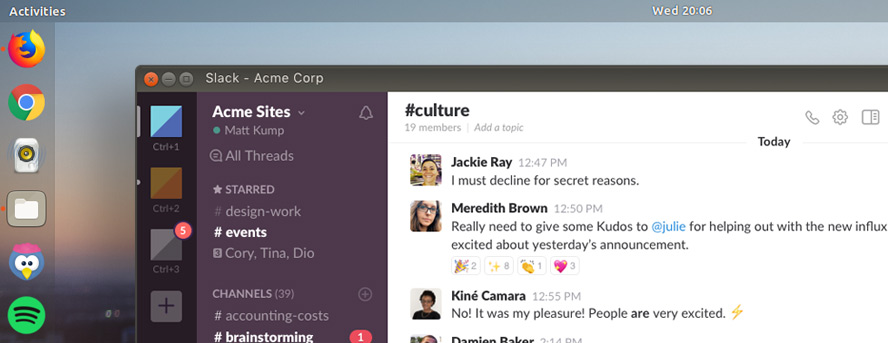
“We are working on making channel search easier so that you can find channels based on the topic, the descriptions – things other than the name to help you find the conversation and get engaged quickly,” said DeLanghe. Other projects underway at the SLI division include channel search, which will simplify discovery of relevant channels for a user without the need to know that channel’s name. “It is about helping people understand how their organization is actually collaborating and whether or not the company is transforming in the way they would like it to as they are using Slack,” she said.

“ team seems to be operating really closely with San Francisco, let me talk with that team and see what they are doing that maybe the other teams aren't doing, and see if I can replicate that in other places in the organization and then track that over time,” said DeLanghe. It would be possible, for example, to identify how well a company's New York division interacts with colleagues based in San Francisco. Improved analytics can help identify silos or communication bottlenecks in an organization. Slack’s largest customer, IBM, has more than 100,000 users. For example, it is possible to see the number of daily and weekly active users, the volume of messages and files sent, as well as how many are using public channels.ĭeLanghe said that more can be done with Slack's data, which could be particularly useful as large companies embrace its platform Slack's adoption has typically been on a team-by-team basis, but large companies such as 21st Century are now using its Enterprise Grid product across their operations. And Microsoft has launched Workplace Analytics, which performs a similar function for its Office 365 tools.įor Slack, the move would add to existing analytics capabilities already available within its platform.
#Slack client software#
A sharper focus on analyticsĪnalytics is something Slack's rivals are focused on, too: Google launched Work Insightsto track adoption of its G Suite software and identify which teams are collaborating frequently using tools such as Hangouts Chat.

The team is also tasked with building out Slack's analytics capabilities to highlight areas for improvement based on information about how teams work together. The New York-based team is responsible for enhancing search functionality and developing the Slack “work graph,” which ties together data on a users' behavior and interactions to enable more accurate recommendations. Slack's SLI division was created in 2016 to help make better use of the reams of information being created and stored as Slack adoption grows. She spoke to Computerworld at the company's Frontiers event this week in New York. “We are hoping to build a set of insights that help you understand not only how Slack is being used, but how your company is collaborating and functioning,” said Jaime DeLanghe, head of Slack's Search, Learning and Intelligence (SLI) team.

NEW YORK CITY – Slack is building a new analytics tool to offer businesses greater insights into how their teams collaborate, part of the company’s plans to make better use of the data created within its popular chat app.


 0 kommentar(er)
0 kommentar(er)
